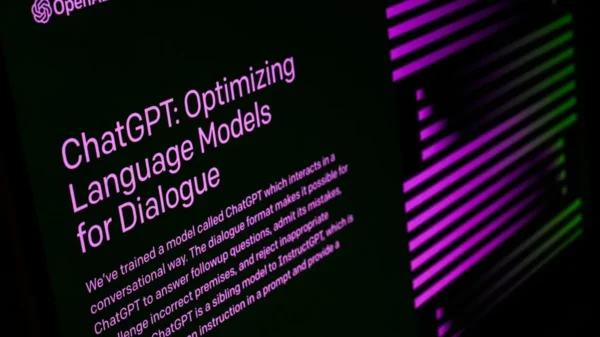In the ever-evolving landscape of digital advertising, a concerning trend has emerged: junk websites filled with AI-generated text are quietly pulling in money from programmatic ads. Our comprehensive article sheds light on this issue, exploring the intricate web of AI chatbots, programmatic advertising, and the unintended consequences major brands face when their ads unknowingly appear on unreliable sites.
The Rise of AI-Generated Text on Junk Websites
In the world of content creation, artificial intelligence (AI) chatbots have a new function: they continuously produce text to fill junk websites. These sites, often characterized by low-quality content, aim to attract advertisers and profit from programmatic ads. The AI-generated text, crafted to mimic human-written articles, presents a facade that lures both users and automated ad placement algorithms.
Unknowing Advertisers and Wasted Expenditure
The alarming reality is that major brands, including Fortune 500 companies, unknowingly have their ads served on these unreliable AI-written sites. Despite the best efforts of platforms like Google to combat spammy content, their algorithms end up serving 90% of these ads. This practice not only contributes to a spam-filled internet but also wastes advertising dollars as brands pay for placements on unidentified websites without their knowledge.

Photo:
MIT Technology
The Programmatic Advertising Dilemma
With the help of sophisticated algorithms, programmatic advertising allows businesses to compete for ad placements across a huge network of websites. The human oversight required to guarantee the caliber and dependability of the websites where ads appear is missing from this automated process, though. Utilizing generative AI, content farms take advantage of this system by producing low-quality websites solely for ad revenue. Approximately 21% of ad impressions are estimated to go to these sites, resulting in an annual waste of $13 billion.
Identifying and Combating AI-Generated Junk Websites
Detecting AI-generated content on junk websites is an ongoing challenge. Organizations like NewsGuard employ a combination of AI and human review to identify these unreliable sites. By comparing the text on websites with error messages from large language models, NewsGuard can uncover AI-generated content and flag it as suspicious. However, the emergence of AI-generated sites continues to outpace detection efforts, requiring ongoing vigilance and advancements in detection technologies.
Ad Tech Companies and Policy Enforcement
While platforms like Google have policies in place to combat content farms and spammy pages, enforcement remains inconsistent. Critics have raised concerns about Google’s ads appearing on content farms, highlighting the need for stricter policy enforcement. The complex relationship between ad tech companies, AI-generated sites, and programmatic advertising raises questions about the effectiveness of existing policies and the need for industry-wide collaboration to address this issue.
The Impact on Misinformation and Trust
Beyond the economic implications, the proliferation of AI-generated sites exacerbates the misinformation problem. Some of these sites spread harmful health misinformation, further eroding trust in online content. The responsibility to combat misinformation while maintaining the integrity of programmatic advertising falls on both platforms and advertisers. Striking the right balance between automated ad placement and content quality remains an ongoing challenge.

Photo:
MIT Technology
Charting a Path Forward
Resolving the issue of AI-generated text on junk websites necessitates multifaceted solutions. Policy efforts should focus on developing robust mechanisms to combat misinformation without eliminating programmatic ads entirely. Stricter enforcement of existing policies, improved detection technologies, and increased transparency in the ad tech industry are vital steps toward mitigating the impact of AI-generated content.
In conclusion, the prevalence of AI-generated text on junk websites highlights the need for industry-wide collaboration and vigilant enforcement of policies. As advertisers strive to maximize the effectiveness of programmatic advertising, addressing the challenges posed by AI-generated content is crucial. By embracing innovative detection technologies, enhancing policy enforcement, and fostering transparency, the industry can pave the way for a more trustworthy and efficient digital advertising ecosystem.










































